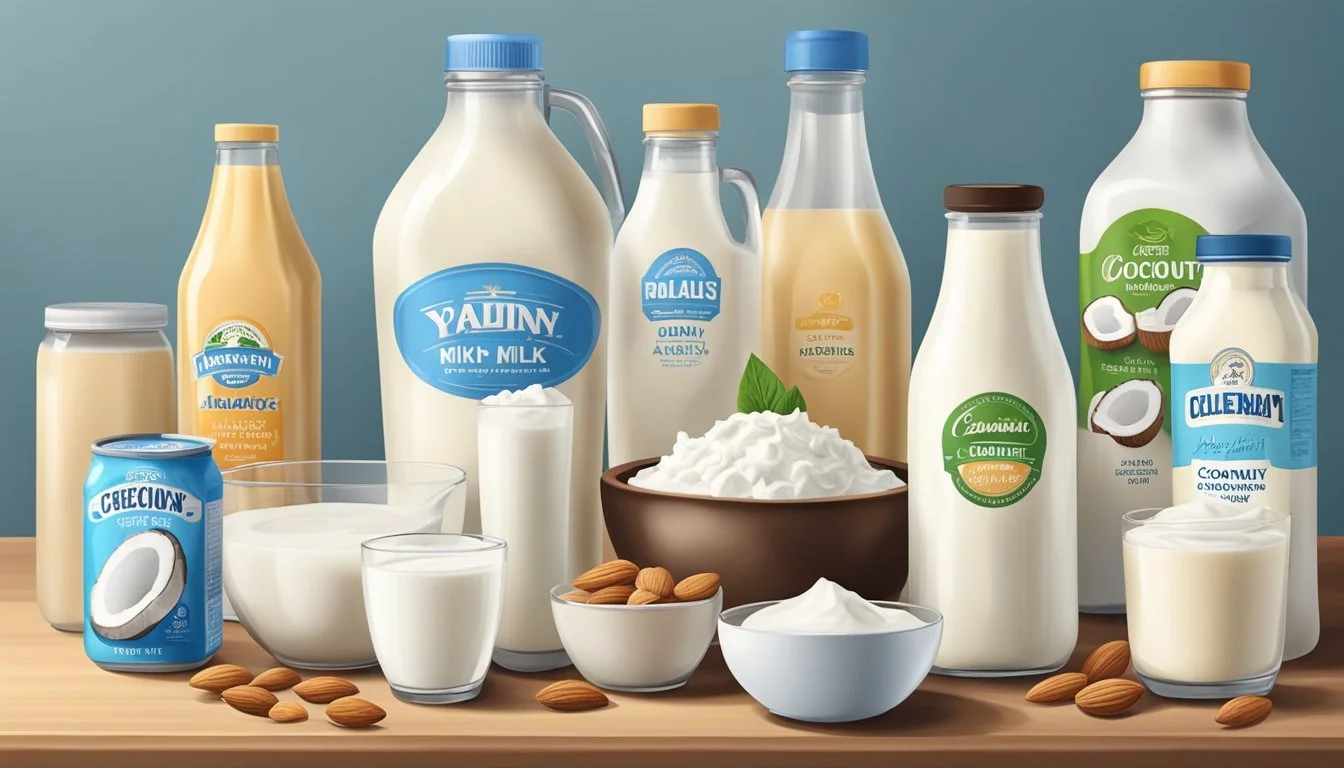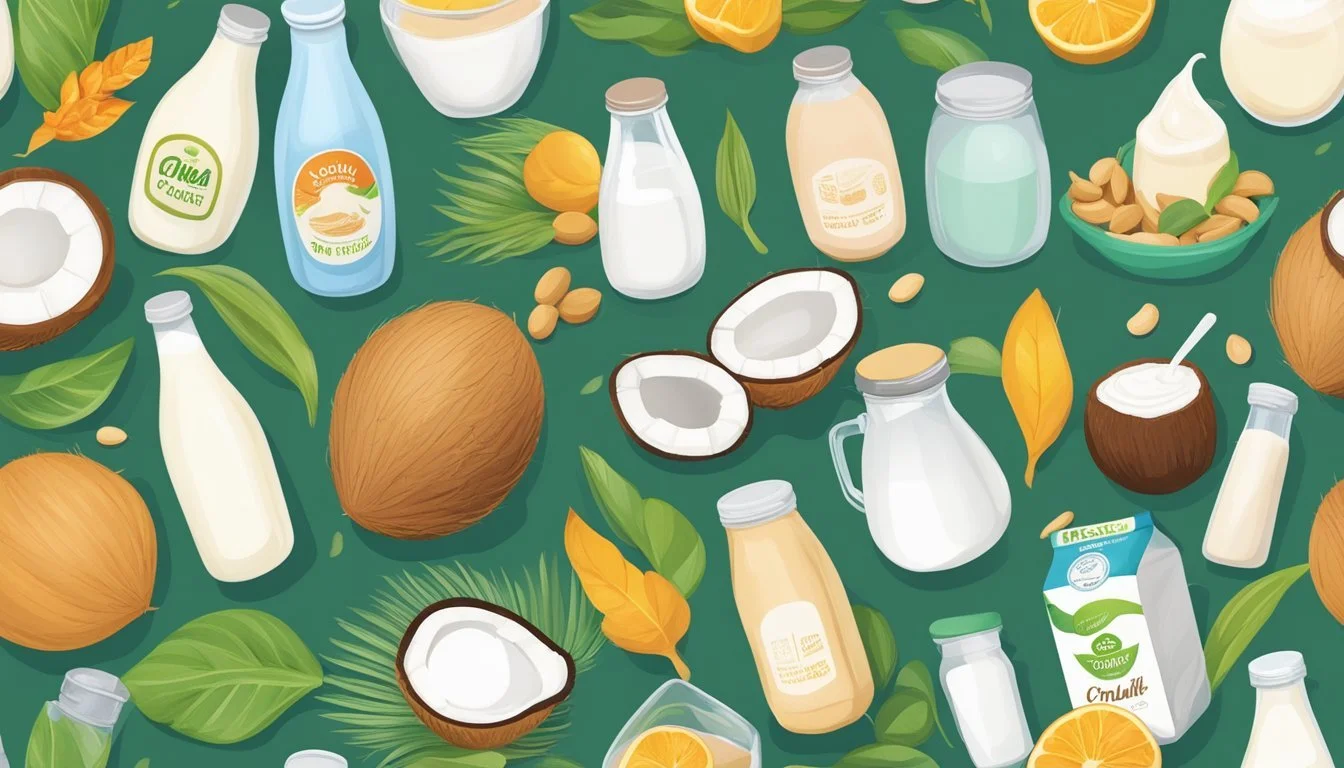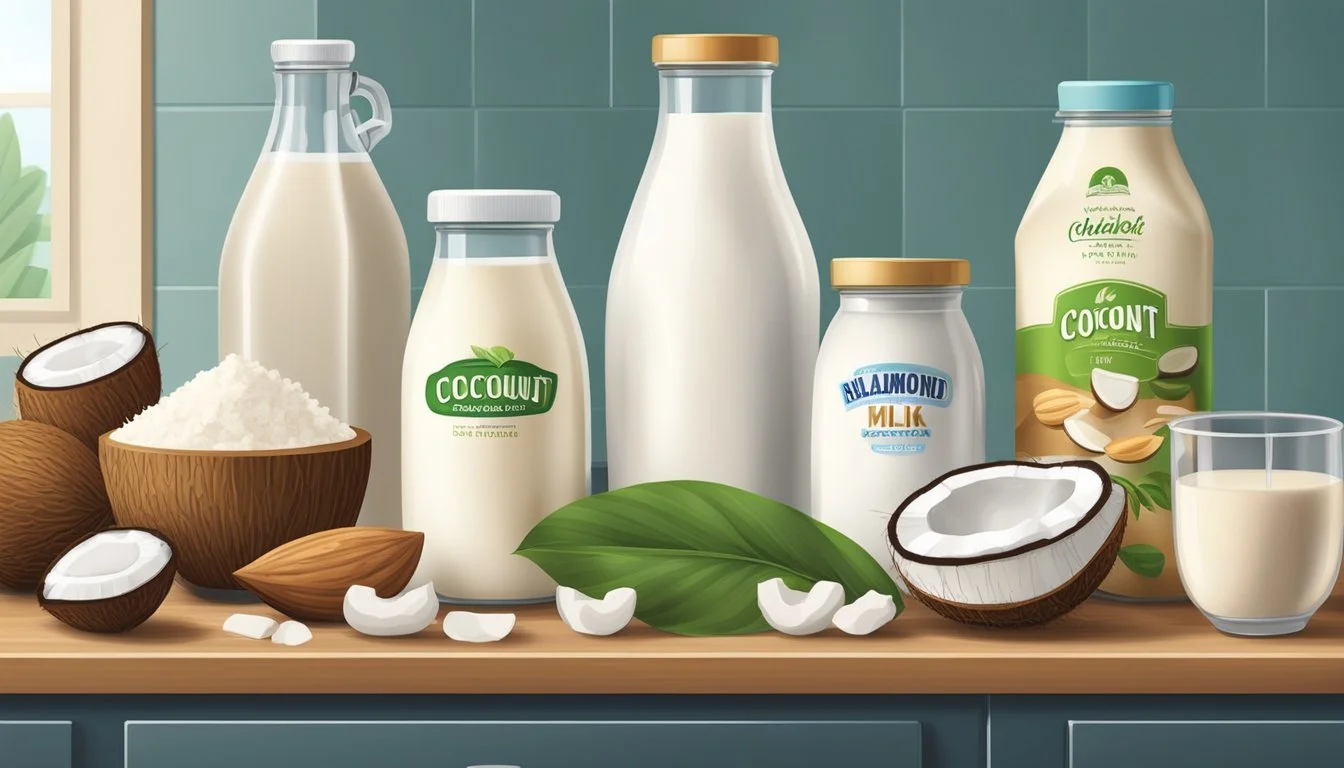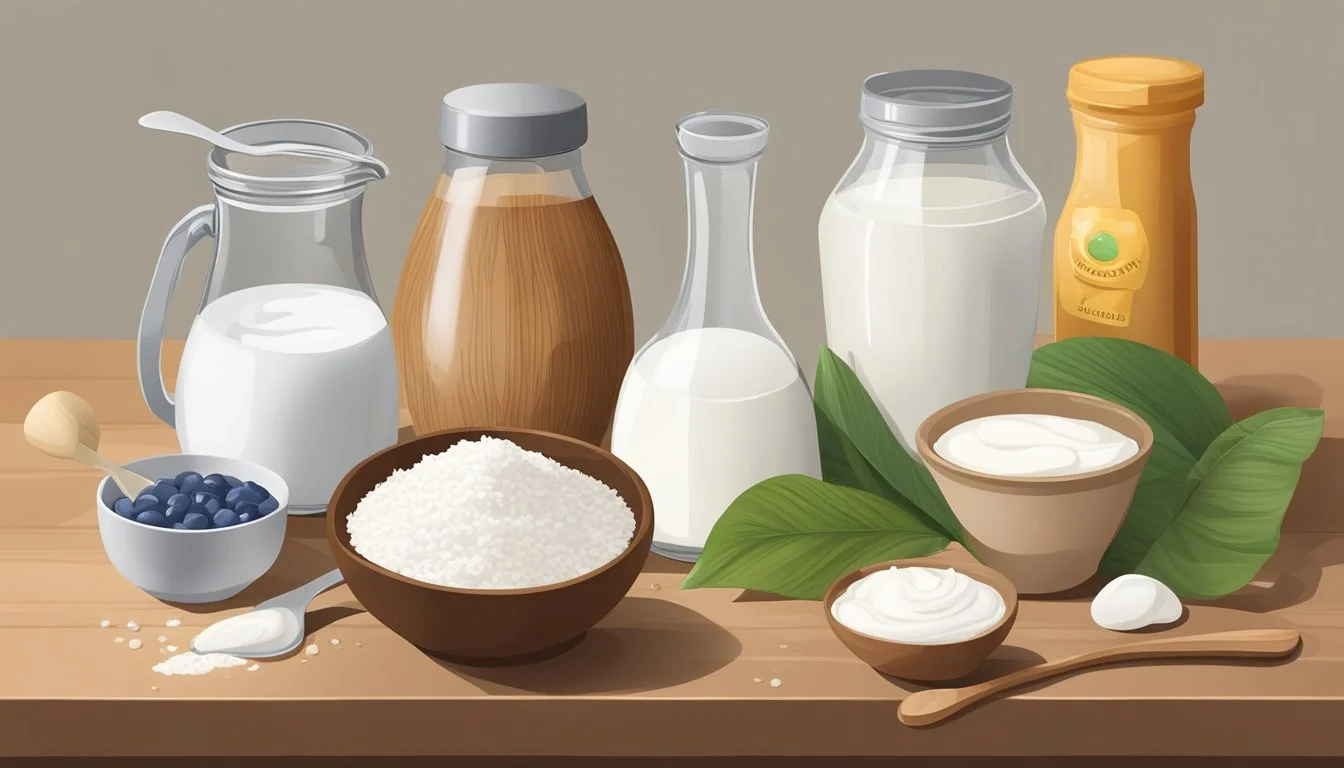Heavy Cream Substitutes
Top Alternatives for Baking and Cooking
Heavy cream is a staple ingredient in many recipes, from creamy soups and sauces to decadent desserts and baked goods. Its high fat content, typically around 36-40%, contributes to the texture and flavor profiles greatly admired in culinary creations. However, there can be times when heavy cream is unavailable, or when a lighter or dairy-free alternative is desired. Finding the right substitute for heavy cream can be crucial for the success of a dish, particularly in terms of consistency and taste.
Fortunately, there are several alternatives that can mimic the properties of heavy cream in both cooking and baking. Dairy options like milk mixed with butter or half-and-half can provide similar richness, while for those seeking non-dairy substitutes, combinations such as soy milk and olive oil can offer a satisfactory texture and flavor. Each substitute comes with its own set of pros and cons, and the choice of which to use may depend on the specific requirements of the recipe and personal dietary preferences.
Understanding the role that heavy cream plays in a recipe is key to selecting an appropriate substitute. In baking, heavy cream can introduce moisture and tenderness, while in cooking, it often adds body and a velvety finish to dishes. Adapting to a different ingredient may require adjustments in fat content and flavor, but with the right substitute, the integrity of the dish can be preserved. It is important to note that while some replacements may work perfectly for sauces and soups, they might not yield the same results when used for making whipped cream or in recipes where heavy cream's unique properties are essential.
Understanding Heavy Cream
Heavy cream is a rich dairy product with a high fat content that is essential in various culinary applications.
Defining Heavy Cream
Heavy cream, also known as heavy whipping cream, is a thick, rich liquid that consists of about 36-40% fat. This high fat content allows it to become easily whipped and hold its shape, differentiating it from lighter options like half-and-half or milk.
Culinary Uses of Heavy Cream
In the kitchen, chefs rely on heavy cream for its luxurious texture and ability to impart a creamy, velvety consistency to dishes. It serves multiple purposes:
Whipping: When whipped, heavy cream aerates and doubles in volume, creating light and fluffy whipped cream due to its fat molecules' ability to stabilize and trap air.
Cooking: It adds richness to soups, sauces, and gravies, often used to finish dishes where the smooth texture is desired.
Baking: Essential in pastries and desserts for both structure and flavor.
Dairy-Based Substitutes
When seeking alternatives to heavy cream that are still within the dairy spectrum, options such as light cream, half-and-half, a combination of milk and butter, or cream cheese can be considered. These substitutes offer a range of fat contents and can often be used in cooking and baking with satisfactory results.
Light Cream and Half-and-Half
Light cream and half-and-half are dairy-based substitutes that can replace heavy cream in various recipes. Light cream contains about 20% milk fat, making it a lighter but still rich addition to sauces and soups. Half-and-half is a blend of milk and cream, with about 10% to 12% milk fat, suitable for a less rich texture in general cooking.
Milk and Butter Combination
Combining milk and butter is an effective way to replicate the fat content of heavy cream. For each cup of heavy cream needed, one can mix 3/4 cup of milk with 1/4 cup of melted butter. This works well in recipes where the high fat content of heavy cream is not needed for whipping but instead for richness and flavor.
Cream Cheese
Cream cheese can serve as a heavy cream substitute, especially in recipes where a thick, creamy texture is desired. It has a high fat content and a unique tangy flavor, making it suitable for frostings, dips, and cheesecakes. The consistency varies by brand, so some may need thinning with milk to match the texture of heavy cream more closely.
Non-Dairy and Vegan Substitutes
For individuals seeking to avoid dairy, a variety of plant-based products can serve effectively as substitutes in recipes that traditionally require heavy cream. These vegan alternatives are characterized by their creamy texture and ability to mimic the functionalities of heavy cream in cooking and baking.
Coconut Cream and Milk
Coconut cream is a rich, thick cream made from the high-fat content of coconut milk. It is an ideal vegan substitute for heavy cream due to its similar consistency and can be used in both sweet and savory dishes. To obtain coconut cream, one can refrigerate full-fat coconut milk and scoop off the solidified cream that rises to the top.
Full-fat coconut milk also functions as a dairy-free heavy cream substitute; however, it is more liquid than coconut cream and may require reduction to achieve the desired thickness.
Soy and Almond Milk
For those looking for a lighter option, soy milk offers a protein-rich alternative. It can be combined with a thickening agent such as cornstarch to enhance its texture. Meanwhile, almond milk, which is less protein-dense, may need to be fortified with either oil or thickening agents to resemble heavy cream more closely.
To replicate one cup of heavy cream: Mix 1 cup soy or almond milk with 2 tablespoons of cornstarch or vegetable oil.
Cashew Cream
Cashew cream is made by blending soaked cashews with water until smooth. This versatile cream boasts a rich consistency perfect for sauces and soups. For a thicker cream, reduce the amount of water or add a bit of non-dairy yogurt to the mixture.
Use 1/3 cup water with 2 tablespoons vegan yogurt to enrich the creaminess if desired.
In crafting these substitutes, it is essential to consider the final consistency and taste of your dish, as these factors will guide the choice of an appropriate vegan alternative.
Other Plant-Based Alternatives
In the search for plant-based heavy cream substitutes, silken tofu and a mixture of olive oil with non-dairy milk stand out for their ability to replicate the creamy texture desired in many recipes.
Silken Tofu
Silken tofu serves as a versatile base for a non-dairy substitute. Its smooth consistency closely mimics that of heavy cream when blended. To use it as a substitute, blend equal parts of silken tofu and soy milk until smooth. This combination is particularly effective for thickening soups and sauces.
Olive Oil and Non-Dairy Milk
For a substitute that incorporates a hint of richness, olive oil can be whisked into non-dairy milk. Combine two tablespoons of high-quality olive oil with one cup of non-dairy milk to achieve a mixture with a creamy texture suitable for use in baked goods and sauces. This mixture does not whip like traditional heavy cream but is excellent for recipes requiring the addition of liquid cream.
Specialty Ingredients for Consistency
When seeking to replicate the thickness and consistency of heavy cream in cooking and baking, one can turn to specialty ingredients that are designed to thicken liquids. These ingredients help maintain the desired texture in recipes where heavy cream is traditionally used.
Cornstarch and Milk
To mimic heavy cream's consistency, cornstarch is an effective thickening agent. The combination can be particularly useful in sauces and soups. A simple guideline is to mix approximately 2 tablespoons of cornstarch with 1 cup of milk. This blend offers a consistency similar to that of heavy cream and can be a convenient substitute in most recipes.
Ratios:
2 tablespoons cornstarch
1 cup milk
Non-Dairy Liquid Creamers
For those requiring lactose-free options or preferring a vegan substitute, non-dairy liquid creamers can serve as an excellent alternative. They come in a variety of bases such as soy, almond, and coconut. Their inherent creaminess lends themselves well to both sweet and savory dishes, and they often come fortified with additional thickeners to emulate the richness of heavy cream.
Varieties:
Soy-based creamers
Coconut-based creamers
Though not included in the subsections, heavy cream powder is another specialty ingredient that offers convenience and stability. Its powdered form can be reconstituted with water to achieve a thickness close to that of liquid heavy cream, making it a versatile ingredient for dry mix applications or when shelf-stability is a priority.
Flavor Considerations for Substitutes
When substituting for heavy cream, it's essential to consider how the alternative will affect the overall flavor profile of your dish, especially when it comes to the balance of sweetness and savory elements as well as maintaining the richness associated with heavy cream.
Balancing Sweetness and Savory Notes
Substitutes for heavy cream often bring a shift in the balance between sweet and savory flavors. For savory dishes, one might use a combination of half-and-half and melted butter to closely mimic the original flavor, avoiding excessive sweetness. In contrast, for desserts or sweet applications, coconut cream is an excellent choice due to its natural sweetness and ability to be whipped.
Maintaining Richness of Flavor
The rich flavor and texture of heavy cream are not just about fat content but also its ability to contribute to the mouthfeel of a dish. To preserve this richness, alternatives should have a similar fat ratio. Using half-and-half combined with butter increases the fat content to approach the creaminess of heavy cream. On the vegan front, a mix of alternative milk and cooking oil provides the needed fat percentage, though the flavor profile will differ based on the type of oil and milk used.
Common Recipe Adaptations
Adapting recipes to accommodate the absence of heavy cream involves careful selection of substitutes to ensure the desired texture and taste are achieved. It's important to consider the substitute's properties and how they will interact with other ingredients.
Baking and Desserts
Baking and desserts often rely on heavy cream for its fat content and ability to whip, essential for textures in frostings and cheesecakes. Suitable substitutes include:
Coconut Cream: Solidifies similarly to heavy cream; can be whipped and is excellent for those looking for non-dairy options. Best used in desserts where a subtle coconut flavor complements the overall taste.
Milk and Butter: Combining ⅞ cup of milk with ⅛ cup of melted butter can replicate the fat percentage needed in baking recipes where heavy cream is called for.
Important note for baking: When substituting for heavy cream, it's crucial to maintain the fat content for the right consistency.
Sauces and Soups
In sauces and soups, heavy cream provides richness and a thicker consistency.
Half-and-Half and Butter: For a similar richness in sauces and soups, combine ⅞ cup of half-and-half with ⅛ cup of melted butter. It makes an excellent alternative in recipes such as tomato soup.
Alt Milk + Oil: A mix of alternative milk (like almond or soy milk) with a neutral-flavored oil maintains the creamy consistency without dairy. This mix can be used in various sauces and soups, adapting the ratio according to desired thickness.
By selecting appropriate heavy cream substitutes, chefs can preserve the desired characteristics of the dish, whether it's the fluffiness of frosting or the creamy texture of tomato soup.
Practical Tips for Using Substitutes
In the culinary world, using a substitute for heavy cream requires understanding how it interacts with other ingredients and how to manipulate its behavior under different cooking conditions. The right techniques can ensure a successful and delicious outcome.
Whisking and Thickening Techniques
When substituting for heavy cream, achieving the desired texture is paramount. Coconut cream, for instance, can be whisked to incorporate air, similar to heavy cream, providing a light and airy consistency suitable for desserts. If a recipe requires thickening, a combination of alt milk (like almond or soy milk) with a tablespoon of a thickening agent, such as cornstarch, can simulate the viscosity of heavy cream. It's crucial to add the thickening agent while the liquid is cool and then gently heat to avoid lumps. One must gently whisk the substitute to achieve a smooth, creamy texture as heating progresses.
For baking: mix alt milk with thickening agent and whisk until smooth.
For desserts: coconut cream may be whipped until fluffy and light.
Preventing Curdling
Curdling is a common issue when using substitutes in cooking and happens when proteins in the substitute react to heat and acid. To prevent this, the substitute should be introduced to the dish gradually and at a controlled temperature. Half-and-half, especially, benefits from being added to a dish that's not at a rolling boil. It's less fatty than heavy cream, so higher temperatures can cause it to separate. Additionally, alt milk substitutes can be stabilized by mixing them with an oil, such as olive or safflower, before adding to the dish. This oil helps protect the substitute's structure under heat.
When adding half-and-half: ensure the dish is at a low simmer, not boiling.
When using alt milk with oil: pre-mix and add slowly to the dish over low heat.
Shopping Guide for Heavy Cream Alternatives
When looking for heavy cream alternatives, shoppers should focus on nutritional content and the intended use in recipes. Whether one needs a non-dairy substitute or simply ran out of heavy cream, the alternatives available can vary widely in flavor, texture, and culinary utility.
Reading Labels Carefully
Shoppers should scrutinize labels for fat content, additives, and milk solids when seeking a substitute for heavy cream. Labels will often indicate if the product is suitable for whipping, baking, or cooking. Milk and butter can be combined as a substitute, but they will not whip like heavy cream. For a non-dairy substitute that whips, one could opt for coconut cream with a higher fat content and no added sugars or preservatives. Products like Greek yogurt or cream cheese are thicker and should be chosen when texture is a key aspect of the recipe.
Locating Substitutes in Grocery Stores
Heavy cream alternatives can be found in different sections of a grocery store. Conducting a thorough search in both the refrigerated dairy aisle and the baking aisle is essential:
For a quick, non-refrigerated option, powdered heavy cream is available in the baking aisle.
Refrigerated alternatives include half-and-half with added butter, which is typically placed near the traditional dairy products.
Non-dairy refrigerated sections may offer soy-based substitutes and coconut cream, generally located with plant-based milks.
In the cultured dairy section, shoppers can find Greek yogurt, which can be mixed with milk for a creamy consistency.
A systematic approach to reading labels and understanding where to find these alternatives in grocery stores will make the shopping experience more efficient and successful.





